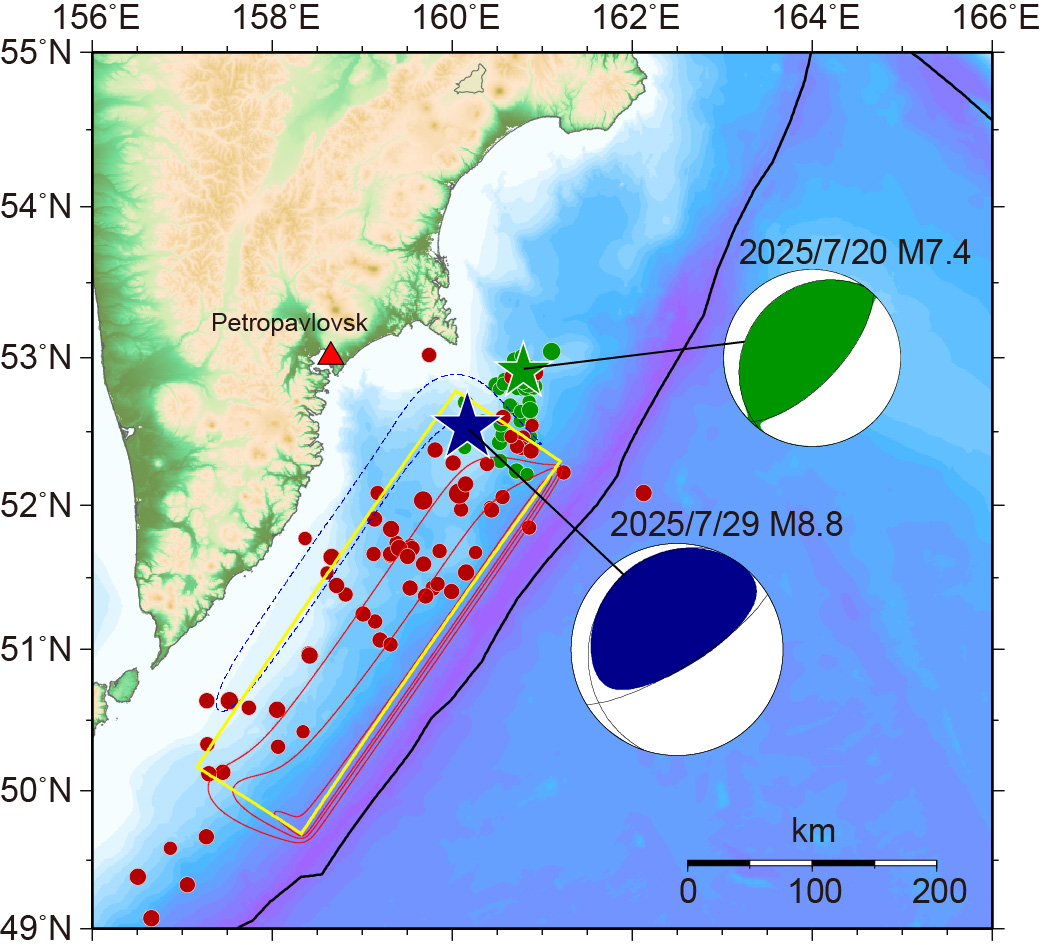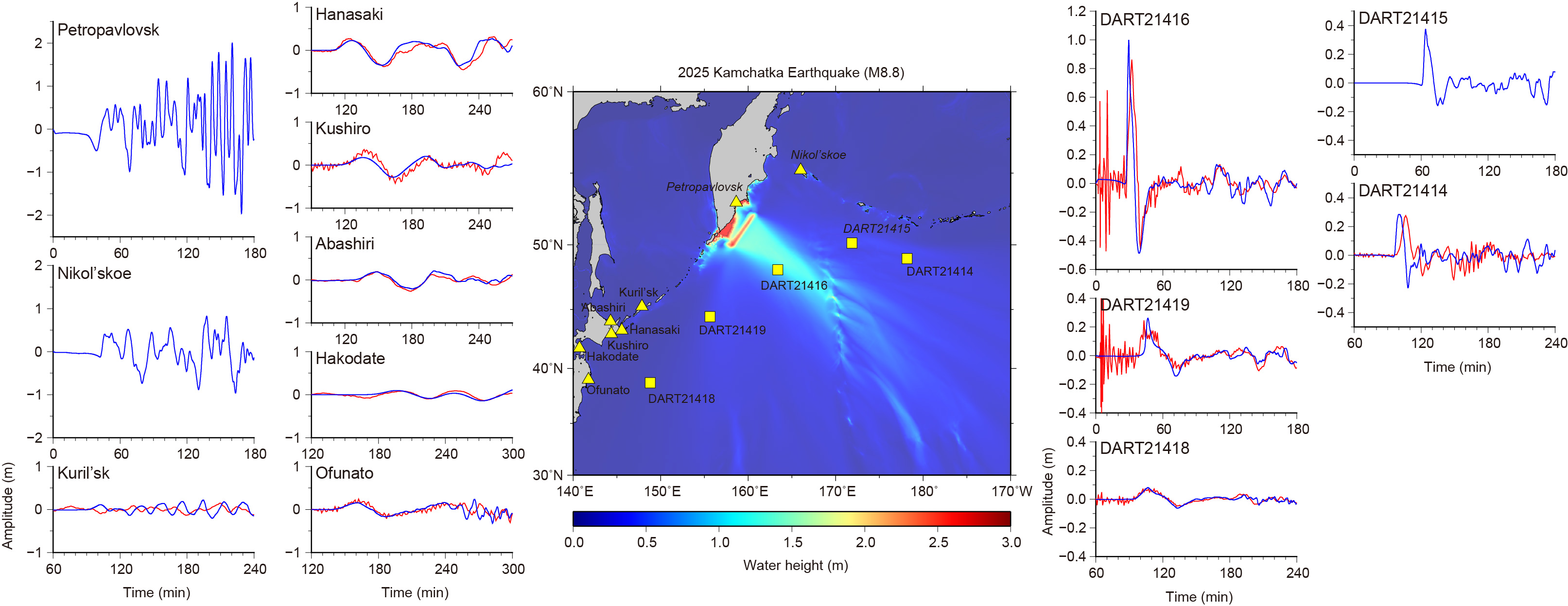| Kamchatka Earthquake on Jul. 29, 2025 |
We have simulated the tsunami generated from the Kamchatka earthquake (52.530°N, 160.165°E, depth = 20.7 km, M = 8.8 at 23:24:50 UTC according to
USGS) on Jul. 29, 2025 (Fig. 1).
Fig. 1 shows the assumed tsunami source model. The fault length and width are 350 km x 100 km. The focal mechanism is strike: 214° from Johnson and Satake [1999], dip: 18° and slip: 51° from the USGS's W-phase moment tensor solution (NP1). The top depth of the fault was assumed to 5 km. The average slip on the fault is 10.0 m. The seismic moment is 1.75 x 1022 Nm (Mw = 8.8) assuming the rigidity of 5 x 1010 N/m2.
As the initial condition for tsunami, static deformation of the seafloor is calculated for a rectangular fault model [Okada, 1985] using the source models.
The used bathymetry data is the 15 arc-second grid data from
GEBCO_2024, which was resampled to 12 arc-second grid data.
To calculate tsunami propagation, the linear shallow-water, or long-wave, equations were numerically solved by using a finite-difference method [Satake, 1995].
We have downloaded the
DART and
Tide gauge data
from the NOAA's and UNESCO/IOC's web sites, respectively,
and compared the simulated tsunami waveforms and the observed ones (Fig. 2).
We can see the tsunami propagation in the Pacific Ocean (Fig. 3).

Fig.1 Tsunami Source Model
The red and blue lines indicate uplift and subsidence, respectively, with the contour intervals of 1.0 m. The focal mechanism determined by USGS is also shown.

Fig.2 Maximum Height of Simulated Tsunami and Tsunami Waveforms
Solid lines in red indicate the observed tsunami waveforms. The blue lines are calculated tsunami waveforms.
Fig.3 Tsunami Propagation (Click to start animation)
The red color means that the water surface is higher than normal sea level, while the blue means lower.
| by Yushiro Fujii (IISEE, BRI) and Kenji Satake (Univ. of Tokyo / National Central University, Taiwan) |
|
|
| References |
|
Johnson, J.M. and Satake, K. (1999), Asperity distribution of the 1952 great Kamchatka earthquake and its relation to future earthquake potential in Kamchatka, Pure Appl. Geophys., 154, 541-553. Okada, Y. (1985), Surface Deformation Due to Shear and Tensile Faults in a Half-Space, Bull. Seismol. Soc. Am., 75, 1135-1154. Satake, K. (1995), Linear and Nonlinear Computations of the 1992 Nicaragua Earthquake Tsunami, Pure and Appl. Geophys., 144, 455-470. GEBCO Compilation Group (2024) GEBCO 2024 Grid (doi:10.5285/1c44ce99-0a0d-5f4f-e063-7086abc0ea0f) |
Last Updated on 2025/7/30